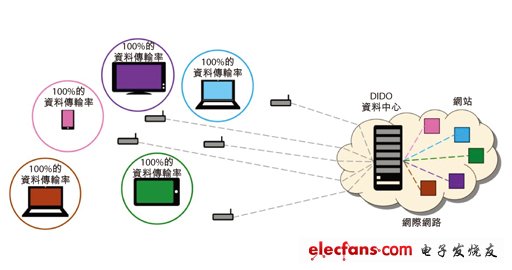Steve Perlman, CEO of California's Rearden Companies, recently published a white paper describing a wireless technology whose spectrum utilization rate can be ten times higher than existing cellular systems. Steve Perlman is an entrepreneur who founded several new companies in succession and is also one of the inventors of DIDO technology.
This digital input, decentralized output (DIDO) method can fundamentally extend the range, and at the same time can reduce the power consumption of wireless signals and the complexity of silicon crystals. However, "we can only say that this technology has just been touched The potential is just the surface, "Steve Perlman said.
"We believe that not only has more applications in the field of communication, but also, with the excellent control and performance of our wireless signal, we believe that it can also bring a wide range of applications to other fields, such as medicine, imaging, manufacturing and alternative energy. , "He said.
This technology uses a data center as an intermediary for all wireless communications. These servers can obviously perform waveform calculations for each wireless client's specific data requirements.
Each client receives a specific waveform that only provides user data. DIDO achieves this function by synthesizing a dedicated channel for each user, which is why no matter how many users share this spectrum, each user can get 100% of the spectrum data transmission rate, Perlman said.

Figure: No matter how many users share the spectrum, the DIDO technology provides a data center to perform waveform operations separately, and each user has a dedicated channel to achieve 100% data transmission rate
A rearden company's base station near Austin, Texas, uses ten wireless technologies to test this new technology. Each wireless technology uses the full-speed data rate available in a specific frequency band.
"We know that this technology can achieve a hundred times higher performance than existing cellular systems, and we are happy to see the ability to achieve a thousand times higher in the near future," Perlman recently announced at Columbia University in the United States. University) said when it first introduced DIDO publicly. "We don't know what the upper limit of this technology is, because it's all about the green field," he added.
Compared to cellular systems, the average power consumption of DIDO technology is only one-tenth of it, and in many cases, it only consumes one percent of the power, Perlman said:
After the DIDO system is fully deployed, the antenna settings will be closer to the user than when using a cellular system. For example, many users may be on the edge of the system, he explained. In addition, in places where there are no users, DIDO will not consume a lot of power, so it can minimize the waste of RF energy, he added.
From the point of view of silicon crystal complexity, Perlman pointed out that the wireless signal of a DIDO access point is as simple as an analog-to-digital converter (ADC), digital-to-analog converter (DAC), or amplifier. All are transmitted using digitized waveforms, or received and then completed in the form of digitized waveforms, which do not need to be processed at all, he emphasized.
But the DIDO user radio will be a little more complicated because it is a portable radio, but its complexity is closer to a wireless intercom, and not as complicated as 3G wireless, Perlman said.
Solar connectors play a key role in solar power generation systems, and their use scenarios and performance directly affect the efficiency and reliability of the entire system.
Usage scenario:
Solar panel connection: Connectors are used to connect solar panels to ensure efficient transfer of electrical energy from the panels to the system.
Module series: A series connector is formed between multiple solar modules to form a battery string to improve the voltage and power of the system.
Inverter connection: Converts the direct current generated by the solar module into usable alternating current, and the connector plays a key bridging role in this process.
Ground installation and roof installation: suitable for different installation scenarios, such as roof installation and ground installation of solar systems.
Performance for solar power system help:
Efficient energy transmission: High-quality solar connectors minimize energy transmission losses and ensure maximum solar energy collection efficiency for the system.
Durable and reliable: Weather-resistant and corrosion-resistant connectors ensure a high degree of system reliability in all weather conditions.
Simplified maintenance: Well-designed connectors reduce system maintenance requirements and improve the long-term stability of the system.
Compliant with safety standards: Connectors that meet international safety standards help ensure safe system operation and reduce potential risks.
In short, solar connectors play a key role in improving energy conversion efficiency, ensuring system safety and reliability, and simplifying system maintenance, and selecting high-performance and reliable connectors can optimize solar power generation systems.
cable connector,dc pv connector,solar cable accessories,soalr cable connector,connector terminal
Suzhou Yonghao Cable Co.,Ltd. , https://www.yonghaocable.com